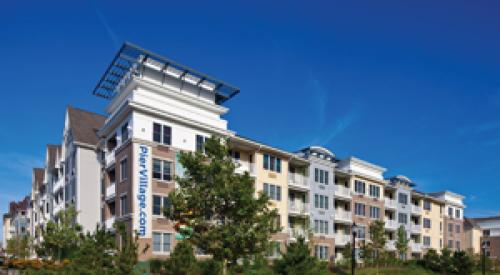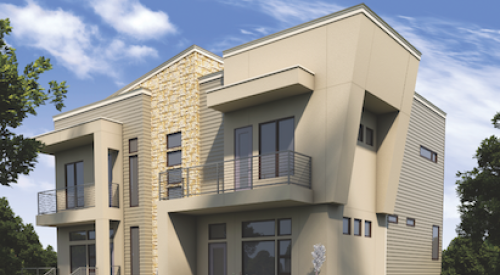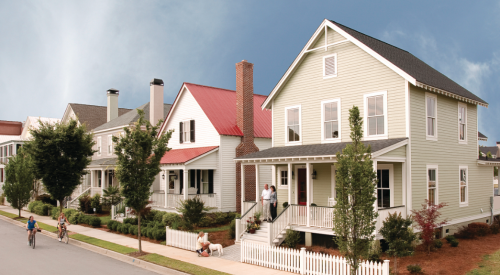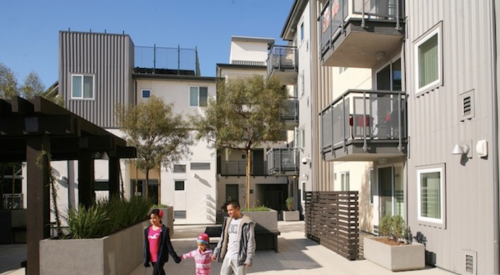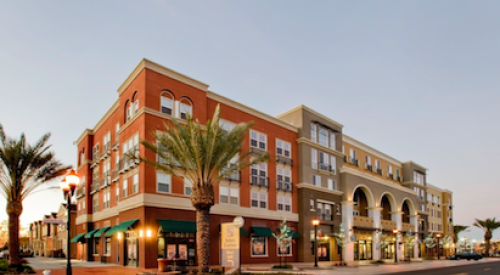|
A model of seamless integration, Chicago's Park Blvd. will consist of varied architecture, city-connected streets and seven different building types - with market-rate, affordable for-sale and rental, and CHA replacement housing mingled together.
|
|||||||
|
As a part of what veteran Chicago-area home builder David Hill refers to as "a project unlike any in the nation," Hill has teamed up with Walsh Construction, Mesa Development and the Davis Group to create Park Blvd. - a unique, fast-tracked, mixed-income, mixed-use project in the city.
The team, officially known as Stateway Associates LLC, is in the process of transforming the Stateway Gardens site, formerly 1,620 vertical slums on the city's South Side, into 1,316 replacement units. One-third of the project, 439 units, will be for Chicago Housing Authority relocated tenants. Another third, 437 units, are designated affordable rental and for-sale housing and the final 439 units are for sale at market rate.
Market rate prices will range from about $140,000 for a one-bedroom unit to the upper $200,000s for homes with three to four bedrooms. According to Doug Guthrie, chief operating officer of Stateway Associates, the average market-rate prices for the whole project should be $190,000 to $195,000. Affordable units will be about $20,000 less.
The six-year project includes a mix of single-family homes, two-flats, three-flats, six-flats, townhomes, three-story courtyard buildings and four-story condominiums, with residences for the various income levels scattered throughout. The first residents move in the spring of 2005.
"There are many pieces to this story, and the process has taken a lot of patience," explains David Hill, chairman and CEO of Kimball Hill Homes in Rolling Meadows, Ill. "We're building an instant city - 37 new structures by seven different architects. If this model works, it is replicable across the country because it doesn't require federal funding."
Stateway Associates put forth significant private capital and a development plan very attractive to the CHA's relocation efforts, thereby accelerating a four-year approval and funding process down to two years.
"This involves a very complex, conventional financing package," Hill says, "but the exciting part is that we're showing it's possible to do a mixed-income, mixed-use project with predominately market financing."
Although the project is forgoing traditional federal funding such as Hope VI grants, the developers do receive $130,000 per unit in low-income tax credits for the CHA housing, which covers most of the construction costs. "Tax-increment financing requires the city to waive taxes on that portion for 20 years," Hill says. "We'll build it, and then with the revenues that would go to taxes, we'll pay off the bonds. But that's less than 10% of our total financing package."
"Stateway Gardens is a perfect example that a builder can work with a city, if it can prove it's capable of providing the quality housing needed. We don't take a step without the local alderman saying it's OK."
Sales are not yet under way - officially - but Hill says success already is assured. "We can't start taking deposits until we have the final building costs and all the city approvals, but we've already got over 1,500 people on a pre-qualified interest list for the first 217 for-sale units. It looks like we'll be an amazing success."
Hill formed Kimball Hill Urban Centers LLC because working in the urban center is very different from working in the suburbs, he says. "The financing alternatives and the complexity of the intermixtures of financing methods are things we don't deal with in our production housing operations. Rather than disrupt that process, we decided to start with the right people, who have the skills and connections to get things done in the city.
"This is a partnership that involves a strong, local minority developer and a major construction firm with 'clout' in the city. But we had to work for three and a half years with the local area council, whose officers are all residents of public housing. It's a very patient process, and one that makes it fairly impossible for a public company to do.
"The return on net investment in this thing is not likely to be solid enough to meet the requirements that Wall Street imposes on public builders," Hill says. It's really kind of mission-driven.
"But if we show some success, there will be benefits for other builders in the future," Hill says. "We're pioneering here, but the future looks very exciting."
